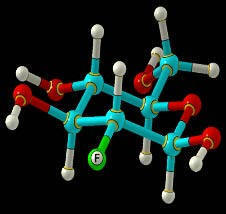by
Barbara Kram, Editor | January 09, 2007

A radiotracer may be used
to determine spread
of prostate cancer.
RESTON, Va.-The collaborative work being performed by professionals across medical disciplines in the promising area of molecular imaging-from research scientists to nuclear medicine physicians, urologists, radiochemists and even veterinarians-provides encouraging news in fighting prostate cancer. This type of progressive-or translational-research can be seen in two papers published in the January issue of the Journal of Nuclear Medicine.
Researchers at Emory University in Atlanta, Ga., and at Nihon Medi-Physics' research center in Chiba, Japan, collaborated closely in examining the potential of using the radiotracer FACBC to better stage or determine prostate cancer spread, said David M. Schuster, an assistant professor and director of the division of nuclear medicine and molecular imaging in Emory's radiology department. "Our two studies show the progression of molecular imaging in what is called translational research, the process of taking research and finding useful applications for it with patients," added co-author of "Initial
Experience With the Radiotracer Anti 1-Amino-3-[18F]Fluorocyclobutane-1-Carboxylic Acid (Anti-[18F]FACBC) With PET/CT in Prostate Carcinoma." Together with "A Preliminary Study of Anti
1-Amino-3-[18F] Fluorocyclobutyl-1-Carboxylic Acid for the Detection of Prostate Cancer," the two papers illustrate the development of a promising radioisotope tracer (a radioactive substance) from in vitro stage (in a test tube) to in vivo (within a live subject) in animals to in vivo in individuals with prostate cancer, explained Schuster. The Emory pilot study with FACBC, performed with only 15 patients, shows that the amino acid analog may hold the potential to provide information to better stage or determine prostate cancer spread, said Schuster. He stressed that FACBC is not available for use with patients, and additional research needs to be done with larger groups of



Ad Statistics
Times Displayed: 656
Times Visited: 5 Fast-moving cardiac structures have a big impact on imaging. Fujifilm’s SCENARIA View premium performance CT brings solutions to address motion in Coronary CTA while delivering unique dose saving and workflow increasing benefits.
patients.
Other than skin cancer, prostate cancer is the most common type of cancer
found in American men. Estimates show that there were more than 230,000 new
cases of prostate cancer in this country last year, making it the third leading cause of cancer death in men. Schuster's study is one of many in which researchers are exploring new and "better" radiotracers that could improve a physician's ability to stage cancer, for example, by providing higher sensitivity. This is very important since treatment and recovery outlook are dependent on the stage of cancer, said Schuster. "FACBC could eventually provide additional anatomical information about cancer location," he added,indicating that there could also be many "spin-off applications" for the tracer (for example, in patients with brain, breast and lung cancers). "This type of research is not a revolution, rather it's an evolution; however, these kinds of evolutions can possibly lead to a revolution," explained Schuster,who is also seeking additional funding for this research.

